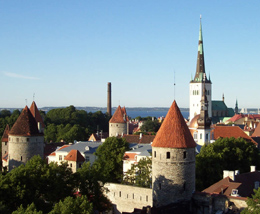
The Estonian Independence Monument is to be built by a Czech company
 |
The pillar, on top of which an Estonian crutch cross will be placed, should be erected in the center of Tallinn by October 15, so that the lighting and other parameters can be tested in advance. It is expected to withstand winds of up to 40 meters per second.
More than 8,000 Estonians contributed to the construction of the monument. A portion of the public, who do not like the design of the monument, has been signing a protest petition.
The construction costs are expected to amount to 63 million Estonian kroons (approximately 100 million CZK). Defense Minister Jaak Aaviksoo stated that this amount will cover not only the contractual expenses for the planning, production, and construction of the monument but also value-added tax. Martin Cháb, the head of Sans Souci, assured BNS that the company would complete the contract on time.
Monuments are a controversial issue in Estonia. Last April, Tallinn witnessed the largest unrest since the regaining of independence due to the relocation of a monument to fallen Red Army soldiers from the Soviet era. The monument meant to symbolize the establishment of the state in 1918 has also caused discontent among parts of the public and the artistic community.
The design selected by a government commission last year is, according to critics, excessive and lacks any artistic creativity. Some Estonians object to the purely Christian symbolism of the monument, while others feel that the work resembles a giant gravestone cross, and ironically ask whether the monument is meant to symbolize "the grave of the nation". However, according to the authors, the shape is inspired by the original design of the Estonian decoration, the Cross of Freedom.
The monument for the fighters for Estonia's independence from 1918 to 1920 has been planned since 1930.
The Estonian crutch cross, where each of the four arms of the cross has a smaller transverse beam at its end, is essentially a historical legacy from the order of the Teutonic Knights, which ruled the territory of today's Baltic republics in the Middle Ages. It is no coincidence that it also resembles crosses from various German nationalist organizations, including contemporary ones.
The English translation is powered by AI tool. Switch to Czech to view the original text source.
0 comments
add comment










